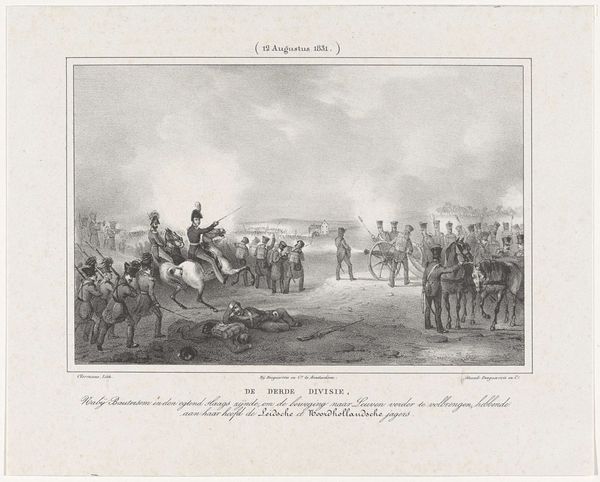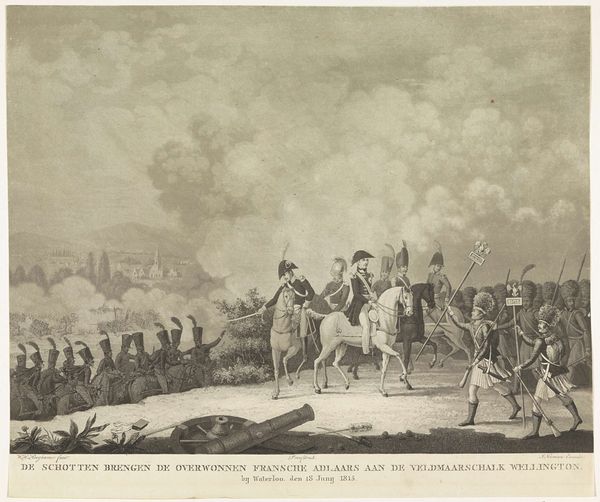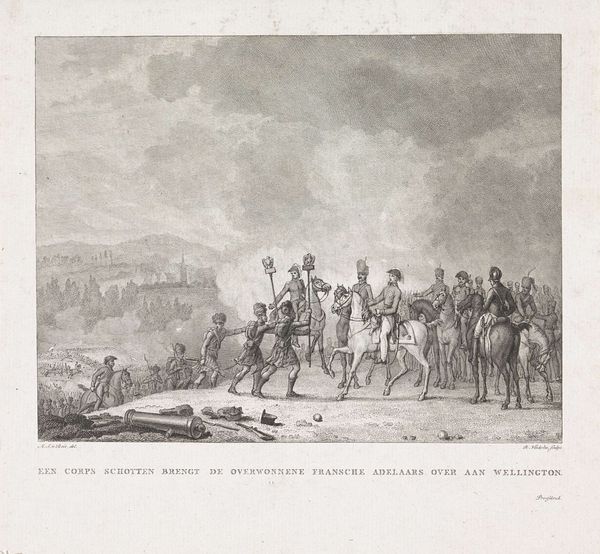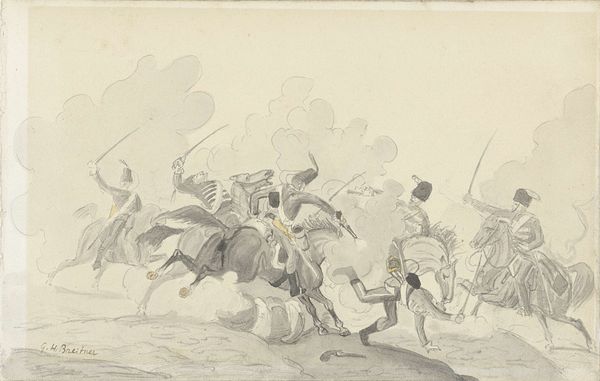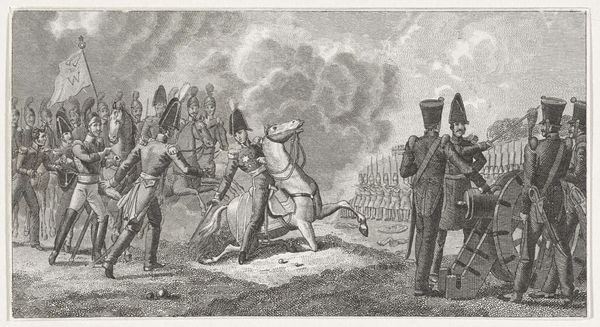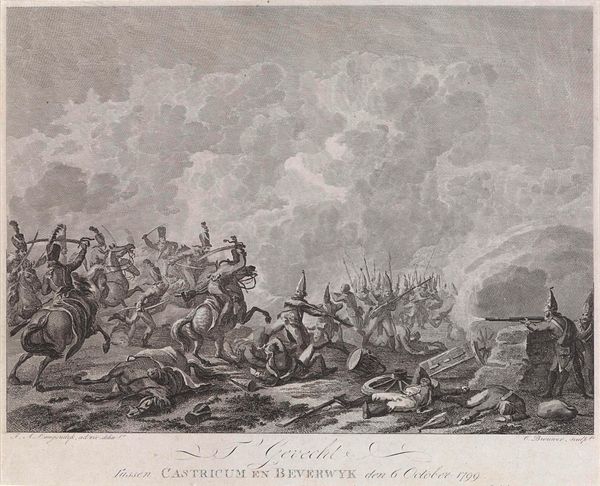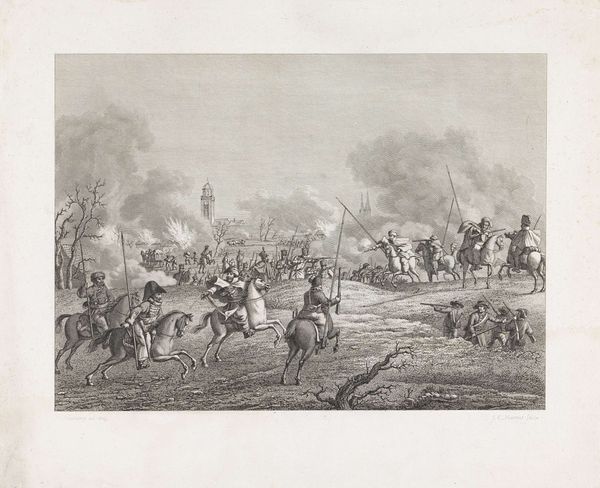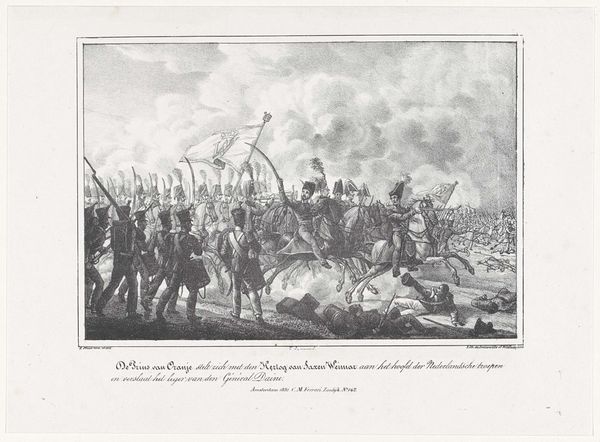
print, engraving
# print
#
pencil sketch
#
romanticism
#
history-painting
#
engraving
#
realism
Dimensions: height 300 mm, width 397 mm
Copyright: Rijks Museum: Open Domain
Editor: Here we have “Uitval vanuit de Citadel, 1831,” an engraving from 1831 by an anonymous artist. It’s a dramatic scene, clearly depicting some kind of battle or siege. It’s monochromatic, lending a sense of stark realism, even though the style hints at Romanticism. What stands out to you in this print? Curator: I’m immediately drawn to the material conditions surrounding the production and consumption of this image. Engravings like these were relatively accessible; this piece provides insight into the means by which news and national narratives were disseminated in 1831. Consider the labour involved in its creation, the role of the engraver, and the market for such prints at that moment in history. Editor: That's an interesting way to think about it! I was focused on the composition. But you are highlighting that this image itself is a commodity of the time. Curator: Exactly. This engraving served a purpose beyond aesthetics. What does the text at the bottom say, and how does it relate to what is shown here? And consider what audience it was designed for and what information and opinion about this event were most popular at the time. Editor: It translates to something like “Dutch soldiers from the Citadel of Antwerp are disabling cannons…” The print is trying to communicate a specific moment and narrative, likely for popular consumption. Who would buy such prints? Curator: That's key! These would have been bought by people involved with, or keenly following the revolution, the Dutch elites, or citizens curious about current events. The print's value lies in how it materially embodies the social and political climate of the time. How do you think we value this work in contemporary times? Editor: I never considered analyzing it like that! It’s fascinating to think of the artwork as not just an image but a product embedded within its historical moment, shaped by the means of its production. Thank you. Curator: Absolutely! Examining art through the lens of material conditions really opens up our understanding of its social role.
Comments
No comments
Be the first to comment and join the conversation on the ultimate creative platform.
